Switzerland Tourism Monocle
Living the high life
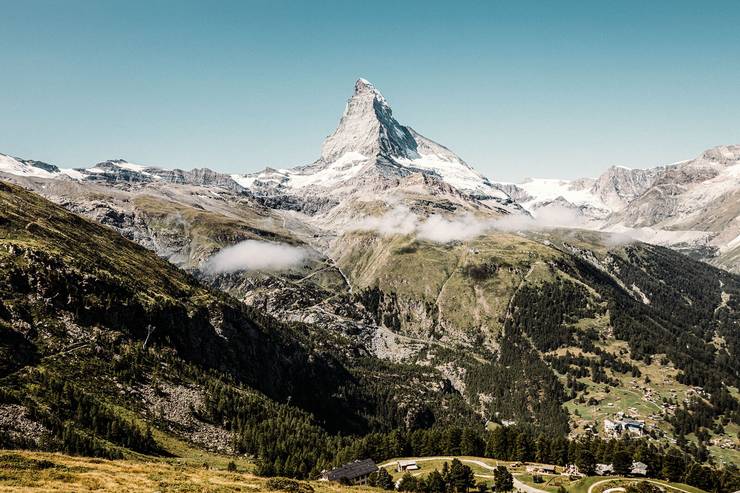
A morning dip in the lake, a hike through the mountains and apéros at sundown – it’s the kind of weekend itinerary that feels effortless in a Swiss city. Whether you’re travelling now or planning ahead, look to these cities that buzz with life and are never far from the refreshing calm of nature.
City lights, mountain peaks
Art, architecture, good food and culture are the reasons why city breaks make for exciting weekends. But who says that they can’t come with a side of relaxation in nature too? Switzerland’s geography means that most of its cities are blessed with both the clear, fresh waters of a lake and the invigorating backdrop of the snow-capped Alps. And with speedy trains criss-crossing the nation and its tunnels, reaching even the highest peak can be easily planned as a day trip. Whether it’s hiking across grassy green pastures, getting tasty insights on an authentic food tour or hopping between city galleries, every afternoon should be topped off with a glass of chilled Swiss wine. From pizza in Lugano to charcuterie in Lausanne or mini macaroons in Zürich, there’ll always be something toothsome to go alongside it too.
01 Basel
Artful living: where to eat, drink, stay and swim
Take me to the river
Connoisseurs know Basel as the home of one of the world’s best art fairs. But between exhibition halls and museums, what many collectors discover – and fall in love with – is the relaxed beauty of this place.
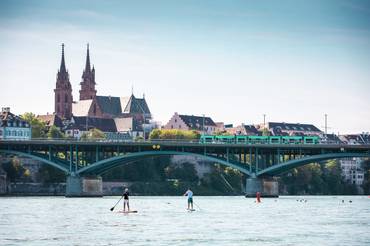
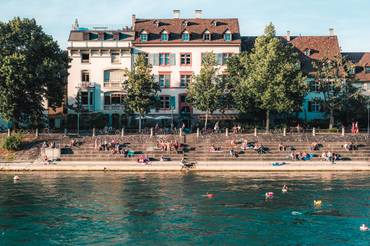
When the sun is out, the Rhine river is all the more inviting for those who wich to dive in. Paddleboarding or swimming in its clear waters offer a new perspective from which to observe the city and its elegant architecture.
Once you’ve dried off, head to a buvette: these refreshment stalls dotted along the riverfront will provide you with snacks and a frosty beer. Next, set off on a food tour organised by the city: over the course of three hours, you’ll drop into five of Basel’s best establishments, from an airy bakery to buzzy lunch spot Klara.
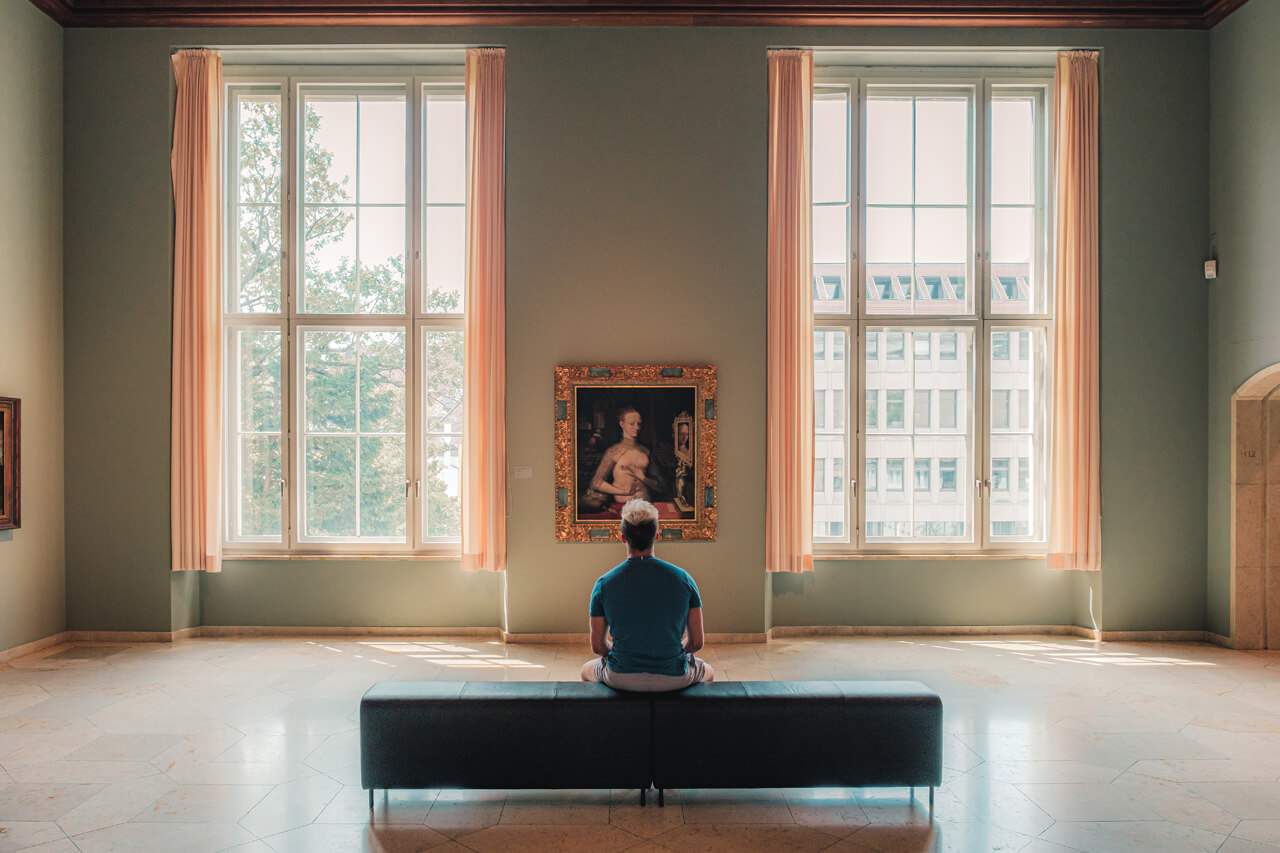

Raise a glass to your efforts at Consum: at this bar in the Old Town you’ve got a 100-strong wine list to choose from. Later, dinner at Volkshaus Basel comes with a side of architectural wonder: this brasserie was designed by acclaimed Swiss studio Herzog & de Meuron. The Nomad Hotel is a short walk away; its sleek interiors and cosy furnishings are another draw for the design-minded.
02 Zürich
Tour: design icons
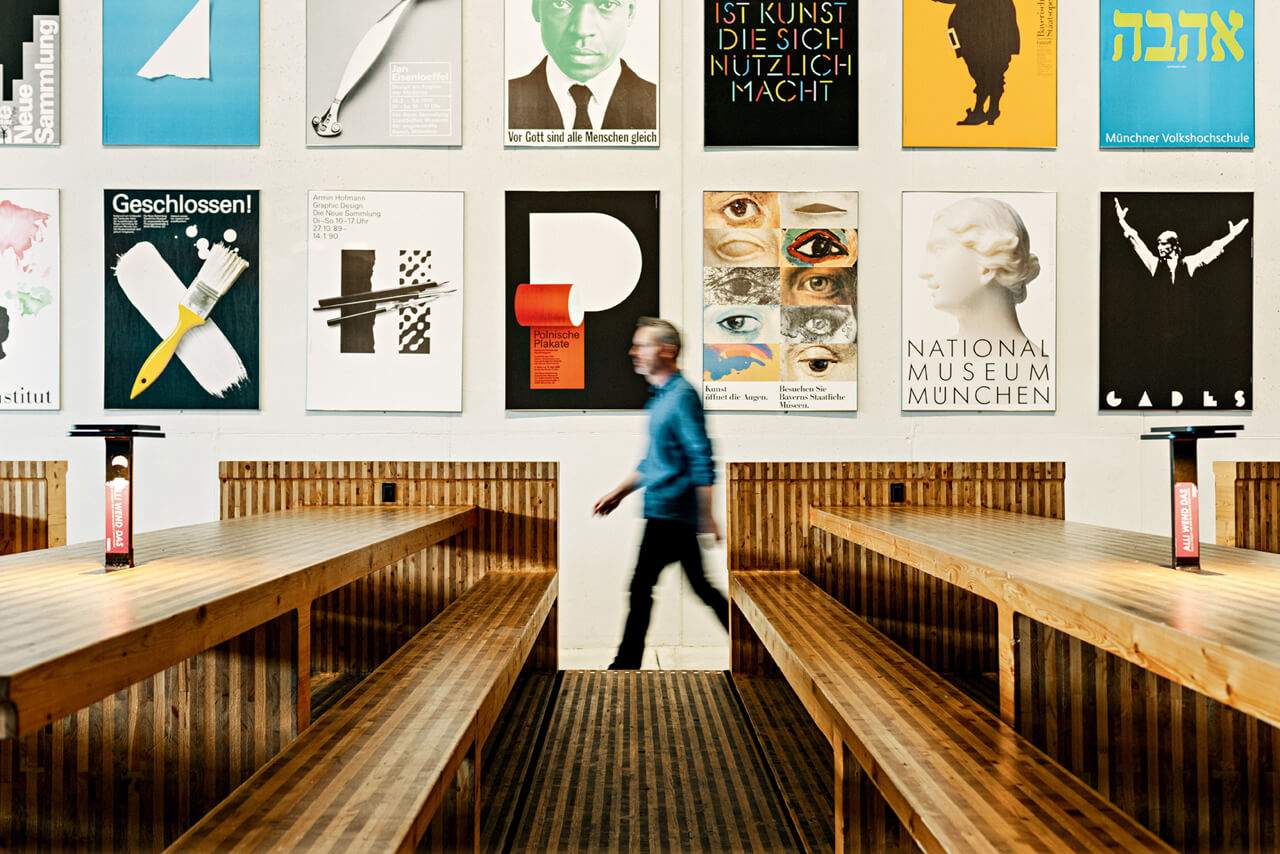
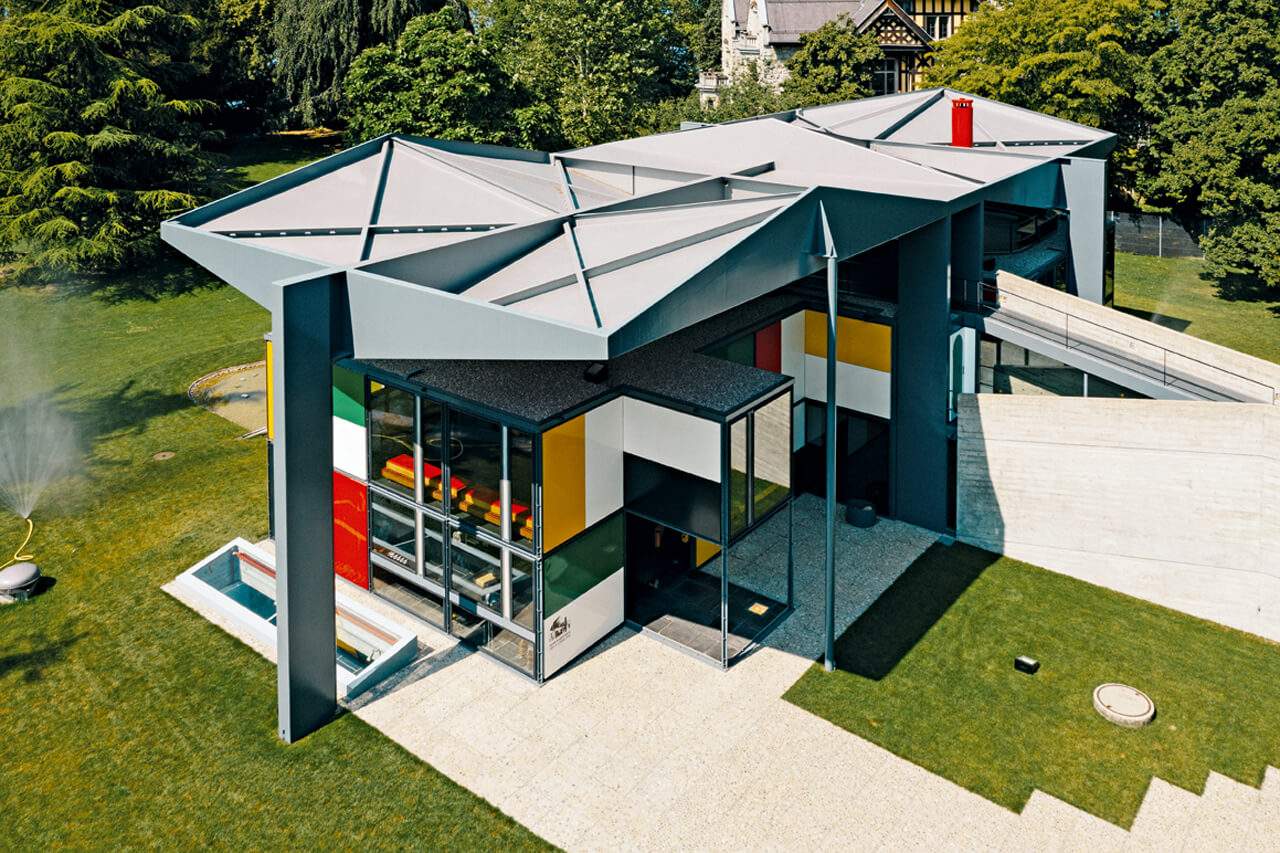
Jump aboard
Gallery-hopping is effortless in Zürich thanks to the city’s comely (and punctual) blue-and-white trams. They’ve become a staple of municipal visual identity and are something of an attraction in themselves but architecture and design lovers should make a point of boarding line number 4. Starting from the redeveloped factory of Toni-Areal in Zürich’s northwest, where Museum für Gestaltung has opened its newest outpost, the route makes its way to the design museum’s original modernist building and continues all the way to the colourful Pavillon Le Corbusier, an unmissable architectural gem in the history of design.
03 Lucerne
Great outdoors: how to make the most of the city’s proximity to Alpine splendour
Close to nature
When a city is surrounded by nature, it’s hard for the great outdoors not to have an impact on urban life – starting from a laid-back approach to the everyday, all the way to inspiration for the artists that call Lucerne home. Walk through the town centre and you’ll spot plenty of murals bringing images of the wild onto the streets.


Many of these paintings are the work of artist duo, Vero and Marco Schmid, aka Queenkong. The couple has travelled the world drawing on nature as their muse but say that their hometown is where they feel that the outdoors is most closely allied to urban life. When not creating their bold, colourful images, the Schmids are most likely to be found in their boat on the lake.
Any day in the city should begin with an appropriately relaxed outlook and a scenic view. Start on the riverfront terrace at Mill’Feuille café. Here you’ll find delicious sweet treats, as well as hearty savoury bites. Breakfast is served until midday so you can take your time flicking through the papers.
Afternoons are for exploration: to get the blood pumping, head up to the Alpine village of Engelberg. Only a 45-minute ride from the city, this is a go-to spot for hikes and biking. The intrepid can take to the trails on Mount Titlis – or you can hop on the gondola for an easy way up and to view the glacier.
If you’re feeling more contemplative, relax on the hour-long boat ride from Lucerne to Vitznau. Once there, jump on the cogwheel train that, through viaduct and ridges, will take you all the way to the summit of Rigi Kulm. After a short but rewarding walk to nearby Rigi Kaltbad, a thrilling cable-car descent sweeps you down to Weggis.

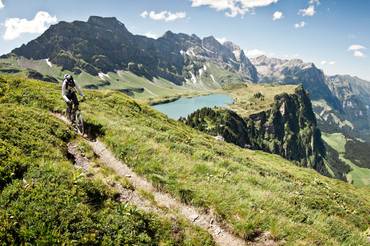
Back in Lucerne, pull up a chair inside the wine cellar at bar-cum-restaurant Opus. After a glass of Lucerne-made riesling, get your fill for dinner at restaurant Helvetia. All produce that goes into the dishes is sourced from the environs of Central Switzerland. Recipes make a point of updating tradition: try the tarte flambée while sitting at an alfresco table in the shade of chestnut trees. And when it’s time to hit the hay, you’re not short on options: take your pick of hotels, from the palatial grandeur of lakeside Hotel Schweizerhof to the panoramic art deco Hotel Montana – or the charming Hotel Wilden Mann, nestled in the old town.
04 Bern
Waves of sound: finding the best live music, independent shops and hidden cafés
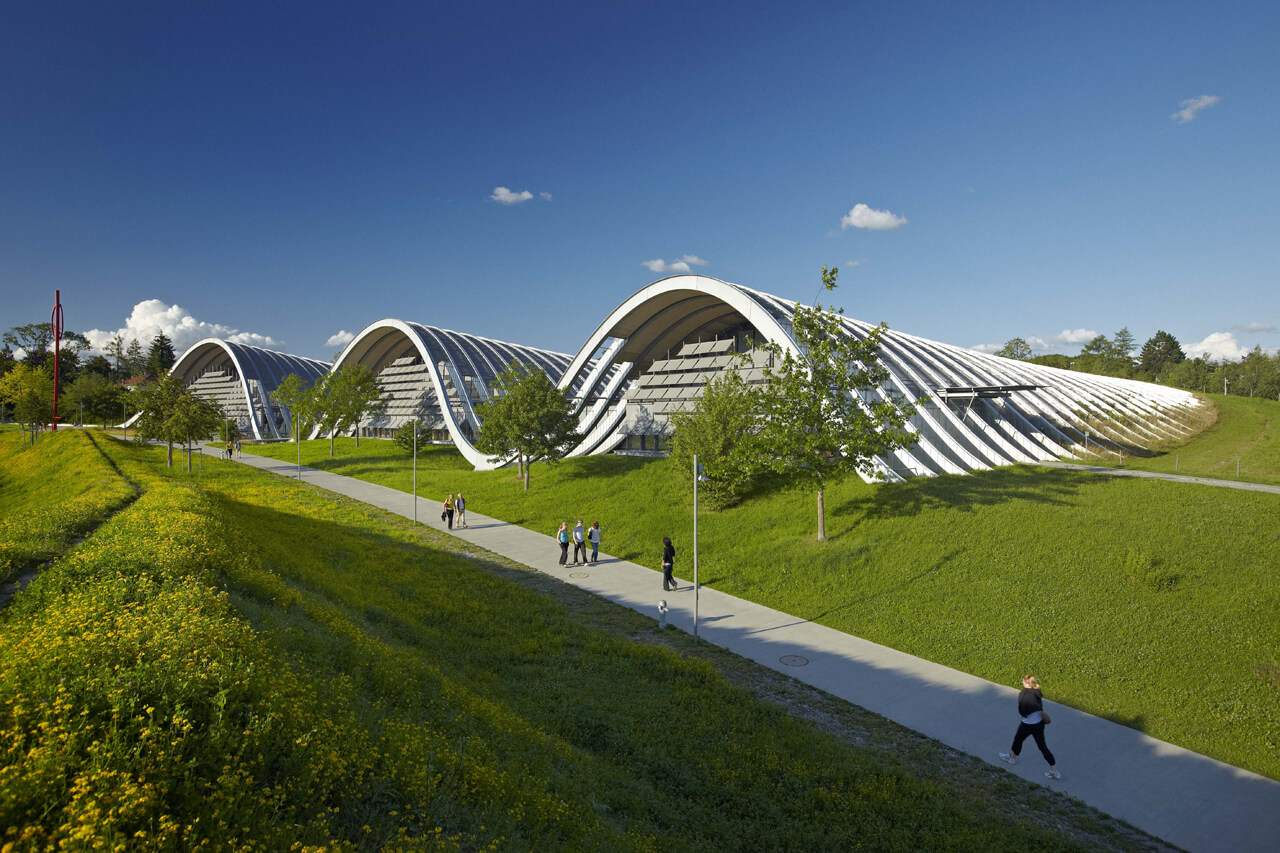
Capital gains
Every Swiss city moves to its own rhythm but things are particularly musical in Bern. The federal capital is first in the country when it comes to the number of musicians it is home to – and that’s easy to see if you explore the city’s concert venues.
First, though, start the day on a high note at Turnhalle. With lofty ceilings and a spacious garden, this café is part of cultural complex Progr. Indulge in its crunchy falafel and hummus with your coffee.
For your cultural fix, head just outside the city to the Zentrum Paul Klee: this museum, dedicated to the artist born nearby, is clearly focused on painting but, in true Bernese style, you’ll find musical performances too.
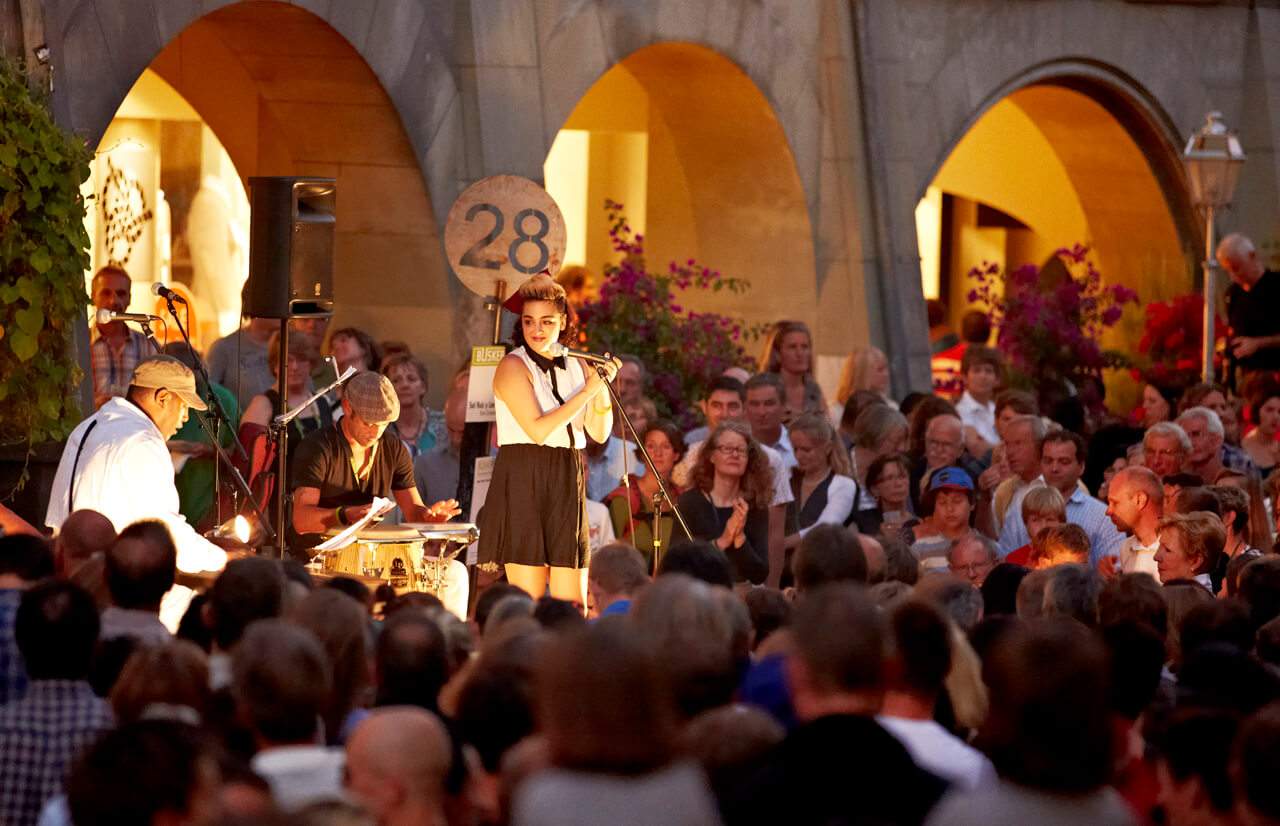
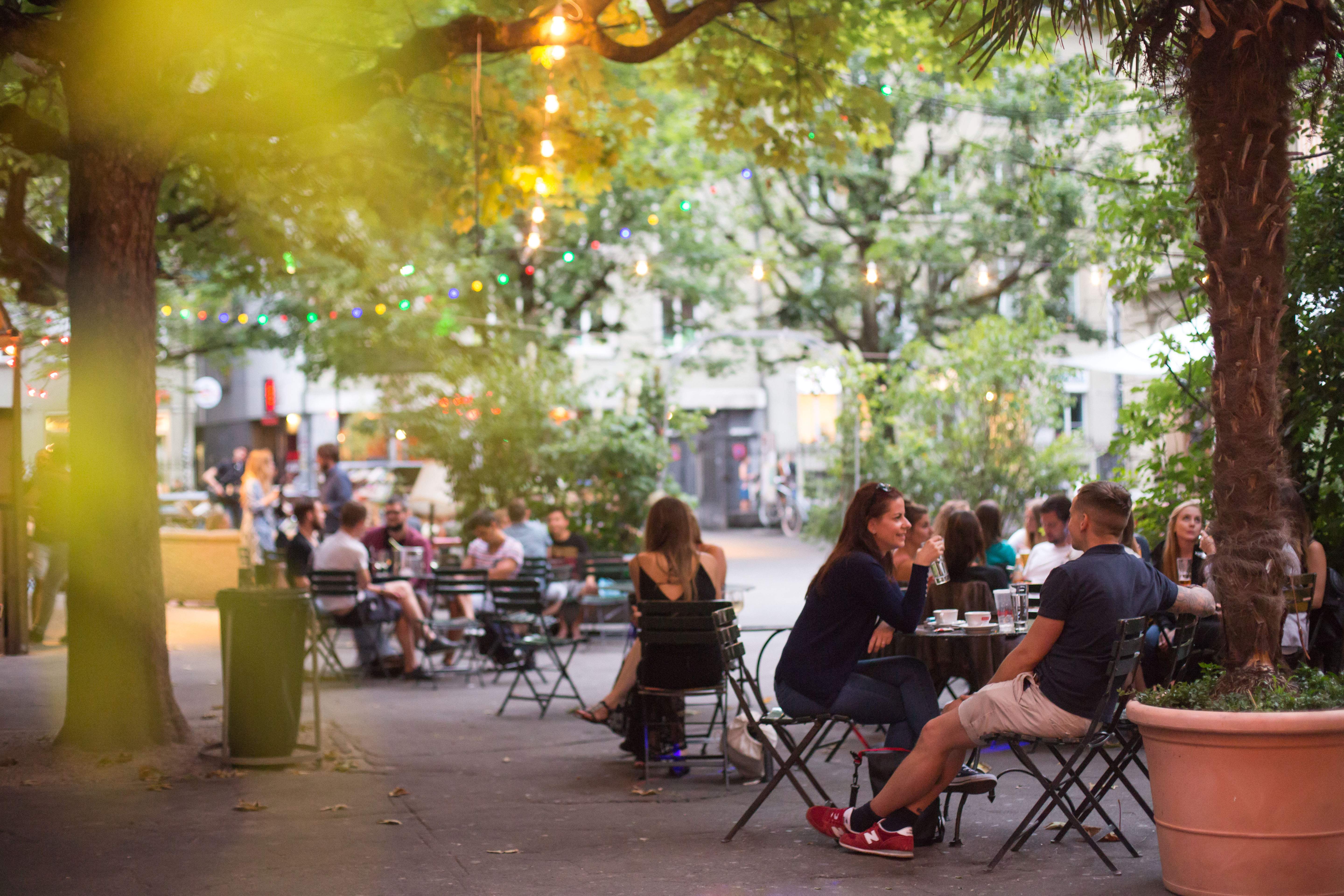
Back in the city centre, take your time exploring the streets of the Old Town. Since the Middle Ages this has been the heart of Bernese commerce and, with independent shops aplenty, that’s still the case today. Ambling down the 6km of arcades, which were first built in the city in the 12th century, feels like a journey through history: many boutiques are also housed inside what used to be the vaulted cellars for storing grains and wines. It’s inside one of these cellars that you’ll find the hidden-away Café Marta, which comes alive every day at apéro hour. Bern has the highest density of microbreweries in Switzerland and this is the place to taste the fruits of this crafty industry: sip on a Bärner Müntschi (or the many international beers on tap) while munching on tangy cheese scones.
Save room for dinner at Restaurant Dampfzentrale: this former power plant on the banks of the river Aare has retained a vital energy. On the menu you’ll find refreshing Mediterranean-style recipes made with Swiss ingredients; stick around after dessert as it transforms into a dance and cutting-edge concert venue.
Then rest your head at the Unique Hotel Innere Enge: as its name suggests, this is no ordinary accommodation: each of the 26 rooms is individual. Surrounded by parkland, it provides a corner of quiet close to the city centre. But the music doesn’t stop here, either: the hotel’s Jazzroom Marians hosts sultry performances – one for tomorrow night, perhaps?
05 Winterthur
Garden city: ripe for year-round discovery
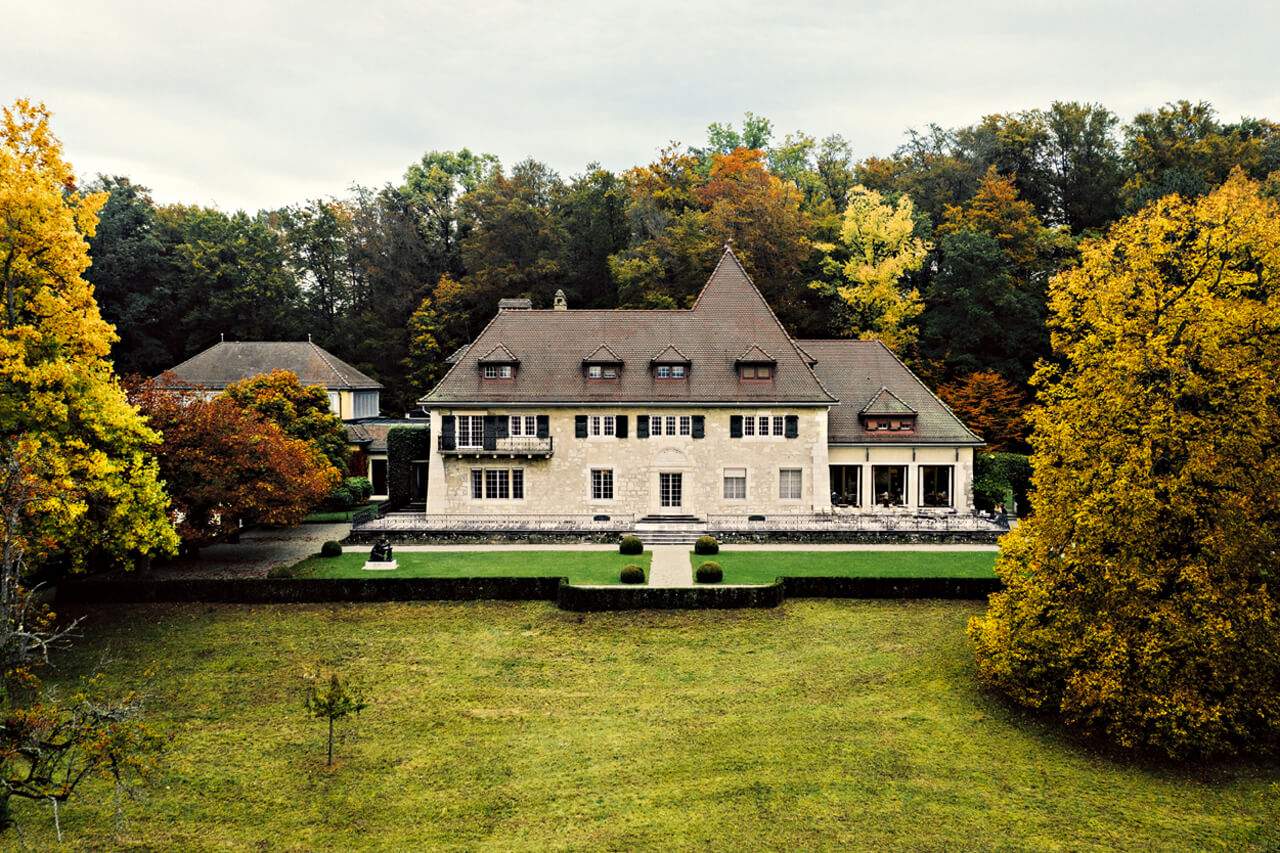
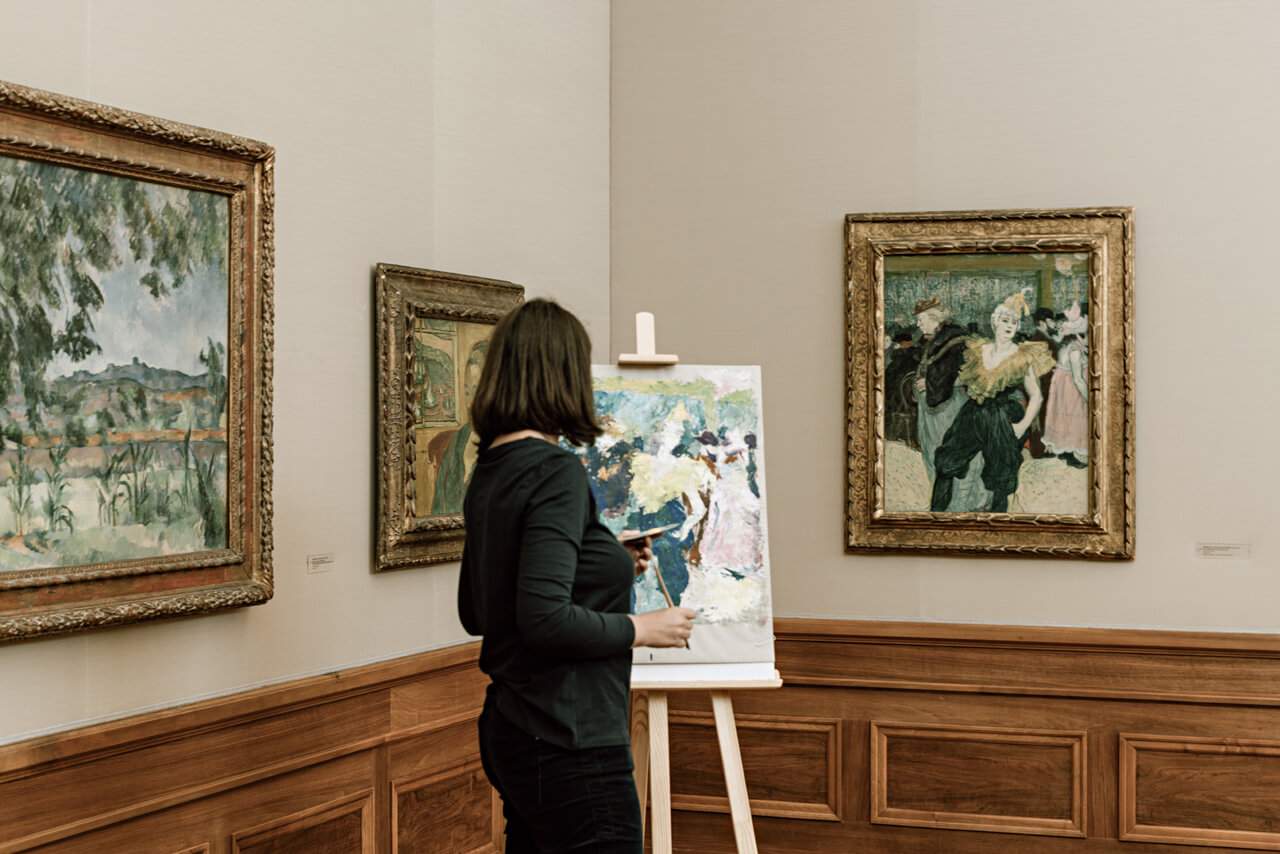
Galleries and greenery
Once the beating heart of Swiss industry, Winterthur now is host to some of the nation’s finest art galleries, photography and technology museums, as well as two that display works gathered by collector Oskar Reinhart. What sets it apart from other art-filled cities? Much of Winterthur’s cultural life plays out before a backdrop of verdant parks; here you can wander lazily from gallery to garden. For a taste, begin at Stadtgarten in the old town; a lush oasis on the doorstep of the Kunst Museum. Wander the elegant halls of this neoclassical building, which showcases part of Reinhart’s extensive collection, before taking a short stroll to the city-centre market at the Obertor. Pick up some cheese and a bottle of red, and head to Reinhardt’s other collection – Am Römerholz – on the edge of town. Take your time over a picnic in the magnificent parklands that surround it before going inside for your cultural fill.

06 Geneva
Lakeside idyll: cosmopolitan yet fresh
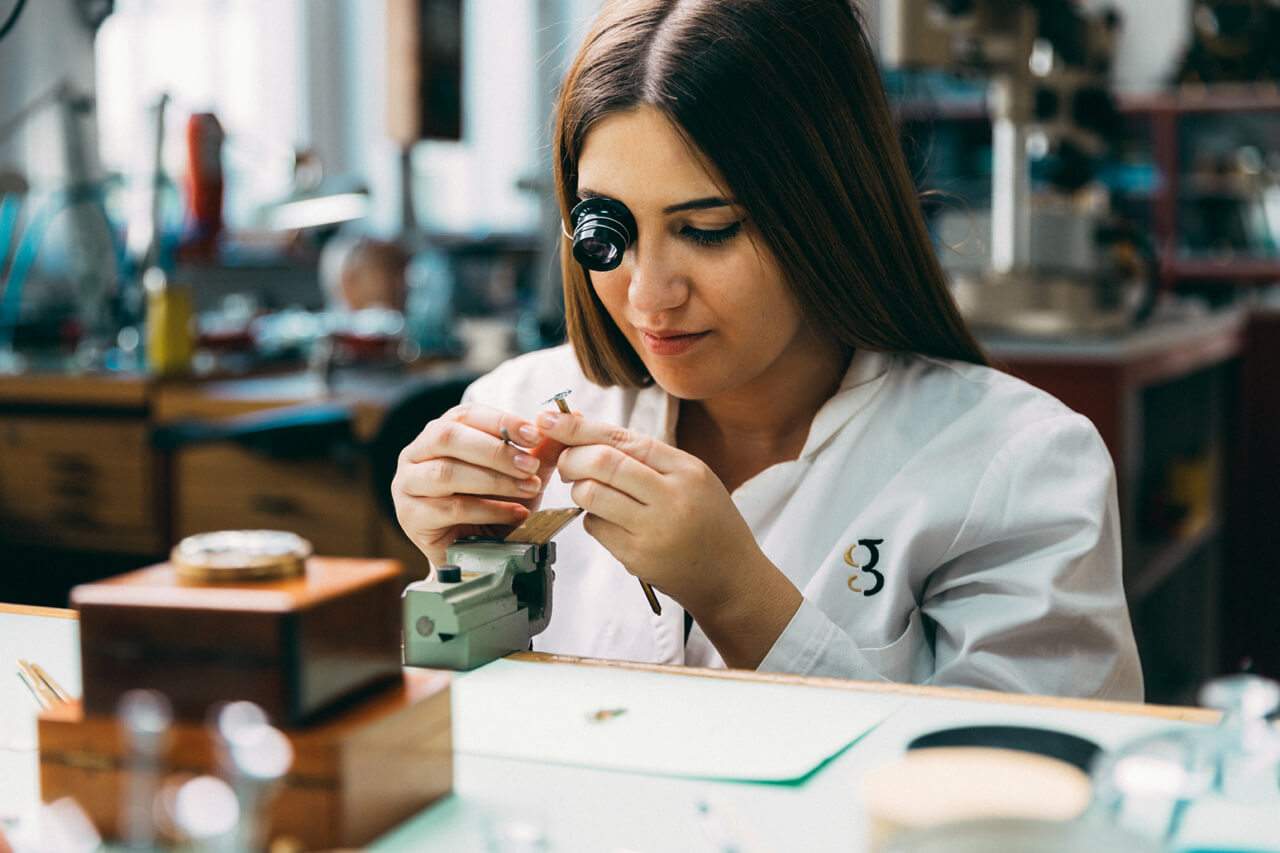
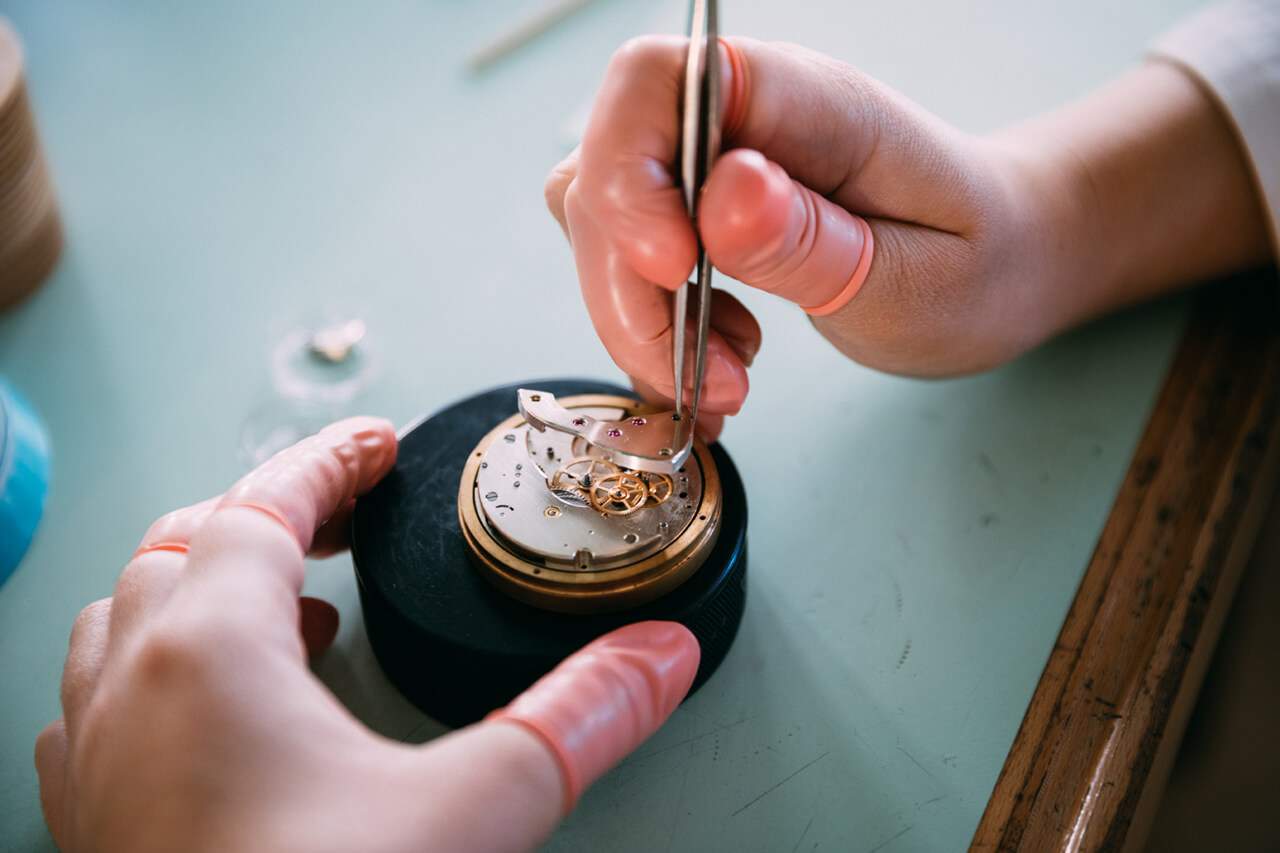
Precise and engrossing
Mention Geneva and you might first think of the city as the home of the United Nations and countless other international organisations. But there’s another industry that keeps the city ticking: watch-making. The country’s French-speaking capital has historically been the meeting point for French craftsmen and Swiss jewellers, whose combined expertise created the world’s most prestigious watch-making industry some 500 years ago. It’s a story best explained by a visit to the Patek Philippe Museum in the city’s Plainpalais neighbourhood. Here you’ll find an impressive display of creations by the brand’s most vaunted watch-makers who, along with Rolex and many other watch brands, still call the city home. You can easily lose track of the hours as you amble in the museum’s art deco halls, as you make your way through the collection and browse the museum’s library dedicated to horology. If you’re more of a hands-on type, though, a visit to École D’Horlogerie de Genève might be just the ticket. The oldest watch-making school in Switzerland offers courses in everything from maintenance to micro-mechanics. Thanks to the industry’s growth and innovation championed by its heritage brands, Geneva is still the meeting point for technologic development and antique craft, which come together, like the Rhône and Arve rivers, in the city’s heart.
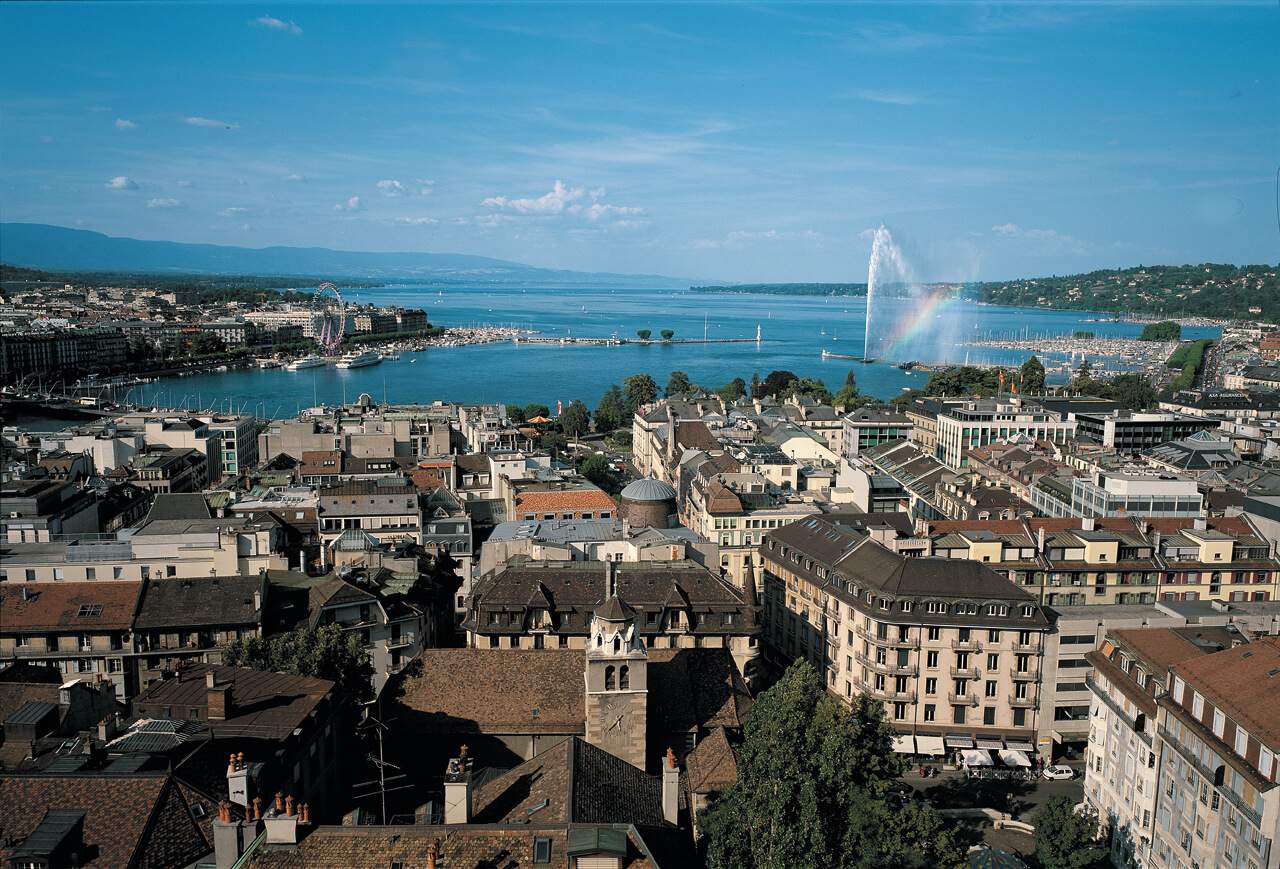
07 Lausanne
Easy living: the city that feels like a resort
Shore thing
Some say that the best way to get to know Lausanne is by floating face-up in its lake. It’s difficult to imagine a better vantage point from which to admire its buildings’ elegant façades and the snow-capped peaks in the distance. Bobbing along in the water also offers another insight into one of Lausanne’s most fascinating qualities: its relaxed pace of life.
Switzerland’s fourth-biggest city is just a 30-minute drive from the French border and Lausanne shares its easy-going dining rituals with its neighbour. That’s particularly evident at apéro time, when people toast the end of a day’s work with a glass of something chilled. Take a stroll through the city’s lakefront squares at dusk and you’ll see bistros buzzing with punters who gather there to enjoy a few small plates – as well as the view. So when in town, make like the locals and grab a late-afternoon seat on a terrace – or in one of the centre’s many rooftop bars.
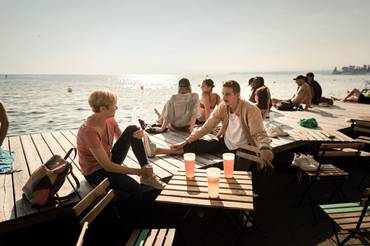
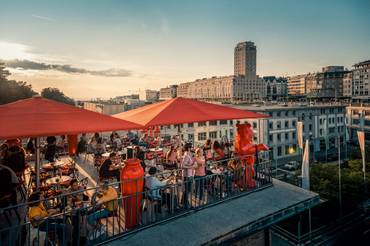
For a taste of the best tipples the region has to offer, though, consider making your way to just beyond city limits. It’s here that you’ll find plenty of charming chambre d’hôtes, small hotels dotted through the vineyards of the countryside. There’s a reason why the enormous viticulture festival Fête des Vignerons takes place in nearby Vevey: this region takes its chasselas and pinot noir seriously – and so should you.
08 St Gallen
Heritage all around: a learned experience
Through the pages
St Gallen has earned its place on the itinerary of many of Switzerland’s visitors thanks to the wealth of history nestled inside its grand cathedral, the Abbey of Saint Gall. The car-free surroundings of the building itself are beautiful enough to warrant a visit alone (the entire abbey precinct was listed as an Unesco World Heritage site in 1983). Yet it’s the abbey’s library that is the true draw for those passionate about studying remnants of the past.
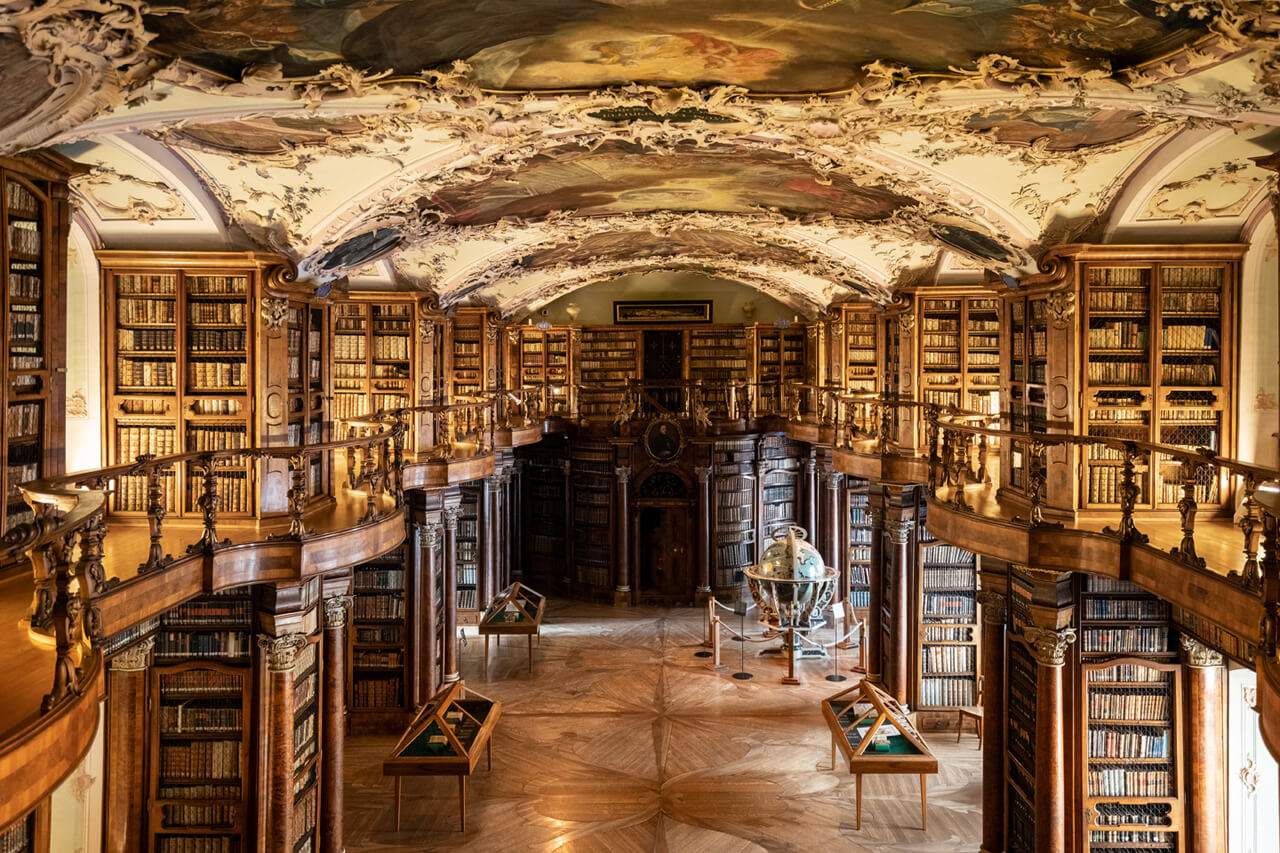
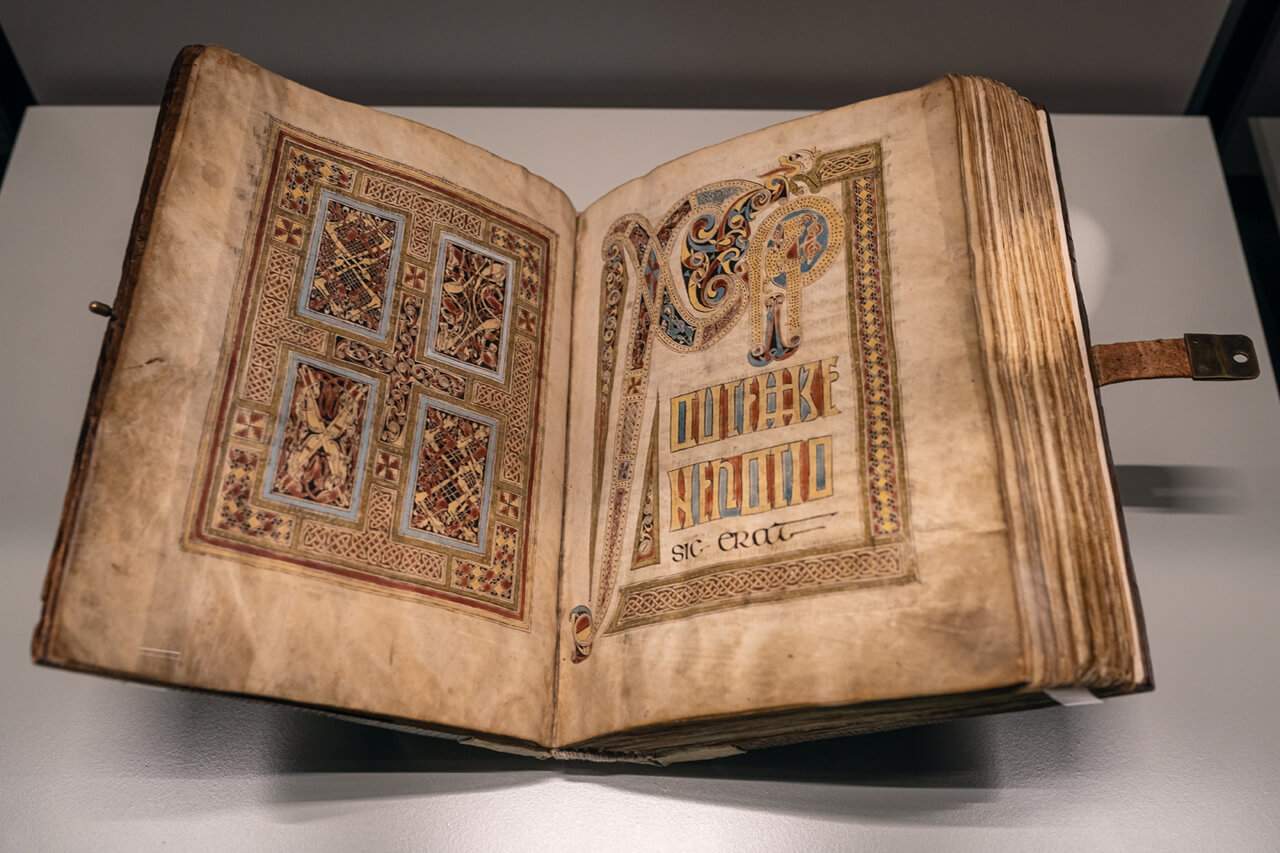
Since the eighth century, the Benedictine monks of the St Gallen monastery have painstakingly collected and recorded some 170,000 volumes, handwritten tomes and manuscripts. Renowned as one of Europe’s great hubs for learning since the middle ages, the abbey and the library also have plenty to teach in terms of architectural heritage. The abbey is a perfect example of Carolingian baroque style, while the library’s hand-carved wooden panelling is guaranteed to impress bookish types.
The original abbey that housed the library burnt down in 937. However, the texts within survived intact, as did the architectural plan of the building – Europe’s oldest of its kind. The 1,200-year-old drawing of the monastery is newly available to see as part of a special exhibition inside the abbey: it’s a unique opportunity to brush up on architectural history.
09 Lugano
Smile: the sun’s out
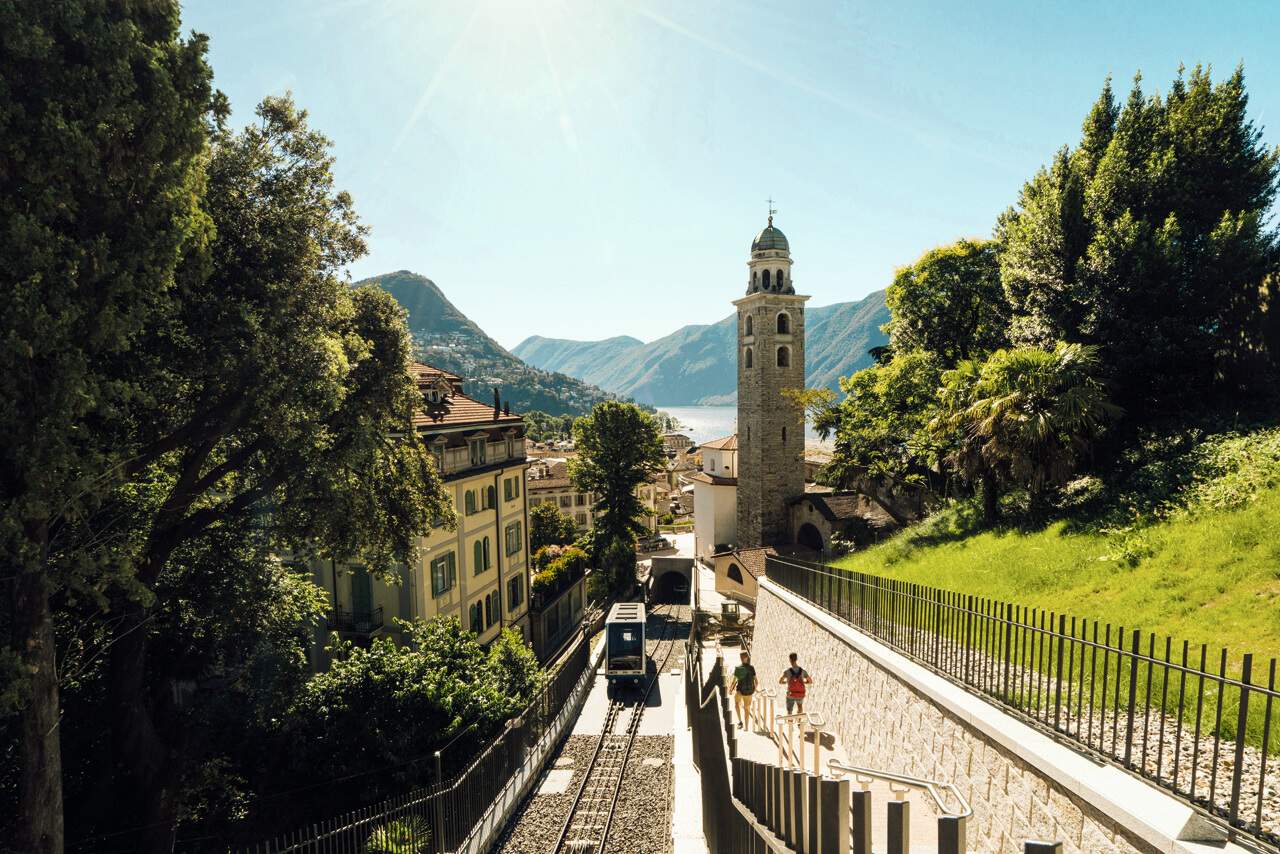

Lively scene
Be it due to its sunny climate or its reputation for glamorous parties, Italian-speaking Lugano has long attracted creative types. All around town, small independent galleries and venues, such as Sonnenstube and Turba, are stirring up the scene. Cultural activities in Lugano revolve around the arts centre LAC: this impressive pointy structure by the lake hosts ballet and theatre shows as well as experimental music gigs. In the summer, the city’s promenade comes alive with concerts as part of the city’s beloved open-air LongLake Festival. Art collectors should also make space in their diaries for the city’s Wopart fair, which is entirely dedicated to works on paper.
10 Getting around
How to travel: by train, bus and boat


Smooth railing
There aren’t many places where a city break requires both swim gear and hiking boots. With its bounty of lakes, rivers and Alpine peaks, no Swiss city is far from nature. Many of these wild corners sit within city limits, so a short hop by tram can take you from hotel to diving board. But getting to higher altitudes too can be achieved via a quick trip on the tracks: Switzerland’s travel system speedily and frequently connects the main cities to mountain resorts, such as Zermatt, which are easily accessible thanks to the Swiss Travel System’s all-in-one ticket – available to buy at Switzerlandtravelcentre.com. Then pick your panorama – such as the awe-inspiring bridges on the Matterhorn Gotthard route. Of course, no view of the Alps will match the perspective you get from the window on a plane as it descends: SWISS flights serve the country’s airports and are the easiest and most spectacular way of getting yourself here.
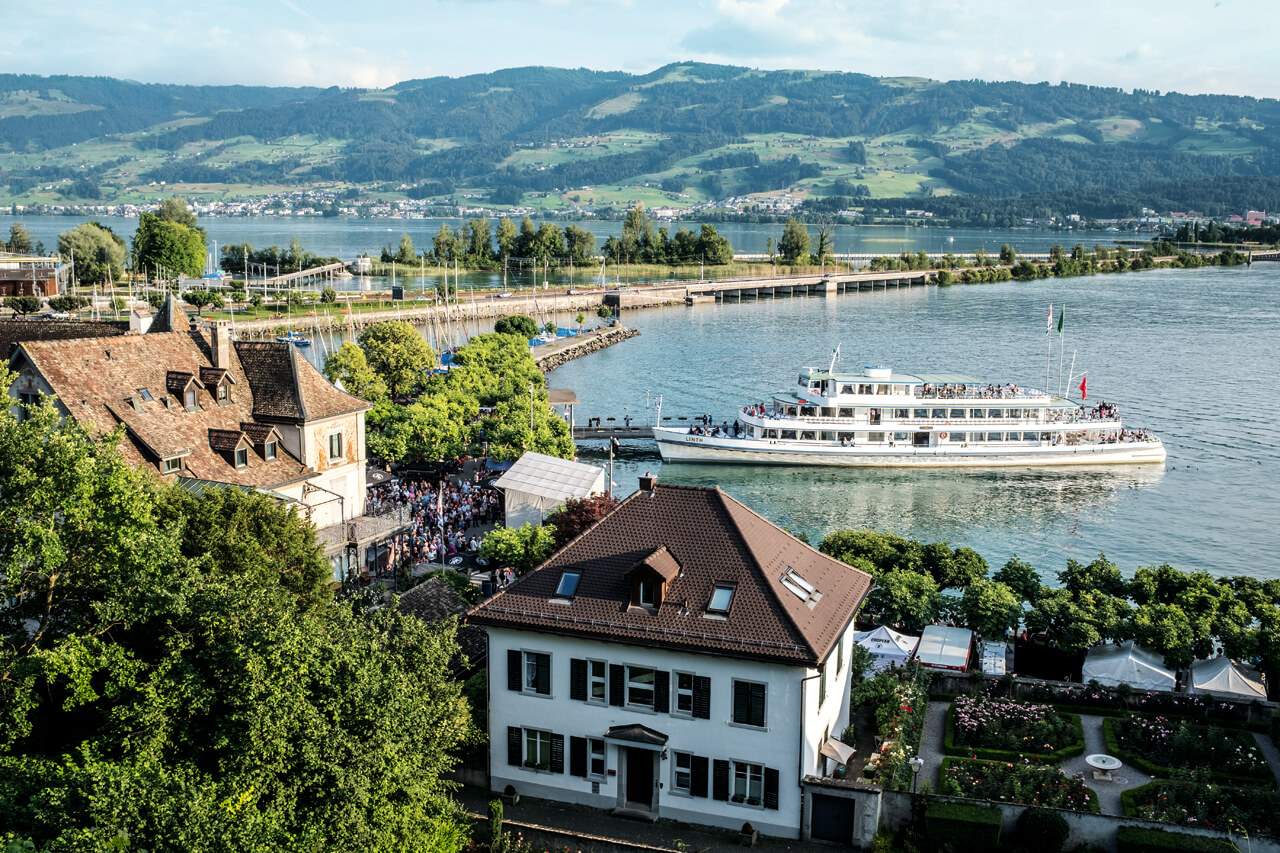
11 Art Museums of Switzerland
Take to art: discover Switzerland via its most dynamic, world-leading art museums
Where to start
A visit to Switzerland will always be rewarding for the culturally minded traveller: this is a country with an impressively high concentration of museums. From contemporary art to design and photography, many of these institutions are international leaders in their fields. Ten of them, dotted across the country, have joined forces in a cultural network called Art Museums of Switzerland. Make your way between sites with a Swiss Travel Pass, which covers journeys by rail, bus and some rather spectacular boat trips.

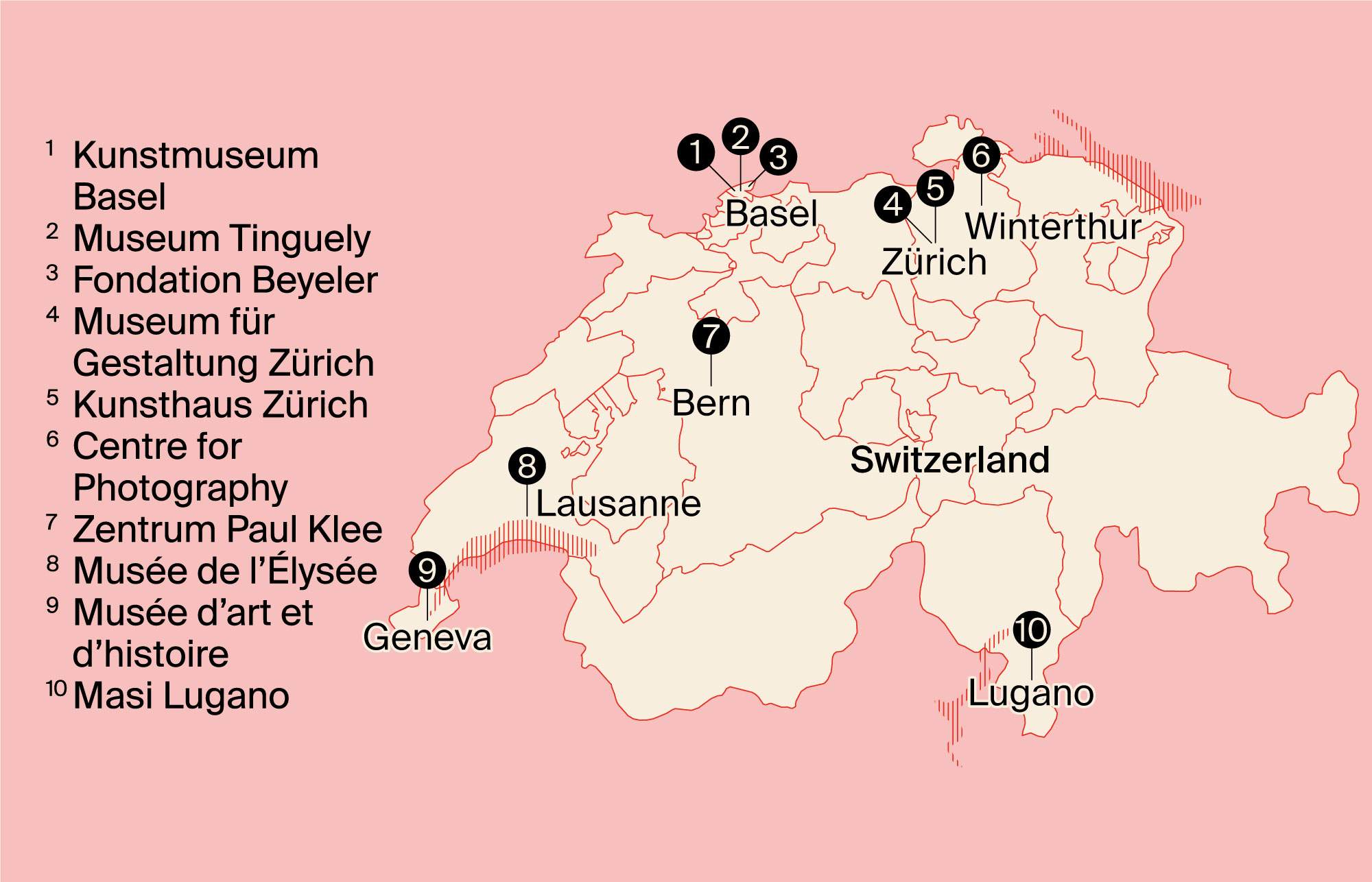
Our tour begins just outside Basel, at the exquisite Fondation Beyeler. First
opened in 1997 to house the impressive collection of art dealers Hildy and Ernst Beyeler, the foundation is set on manicured grounds complete with a sculpture garden. Inside, temporary exhibitions on modern and contemporary art are always bathed in abundant natural light, courtesy of the Renzo Piano-designed building, with its floor-to-ceiling windows and cantilevered roof.
Next we go to a museum by the same Italian architect: the Zentrum Paul Klee in Bern. The wave-like structure holds the world’s largest collection of works by the Swiss 20th-century master. 4,000 art pieces are displayed in rotating exhibitions organised by theme – but here you’ll also find retrospectives on other artists linked to Abstract Expressionism as well as theatre, dance and music performances.
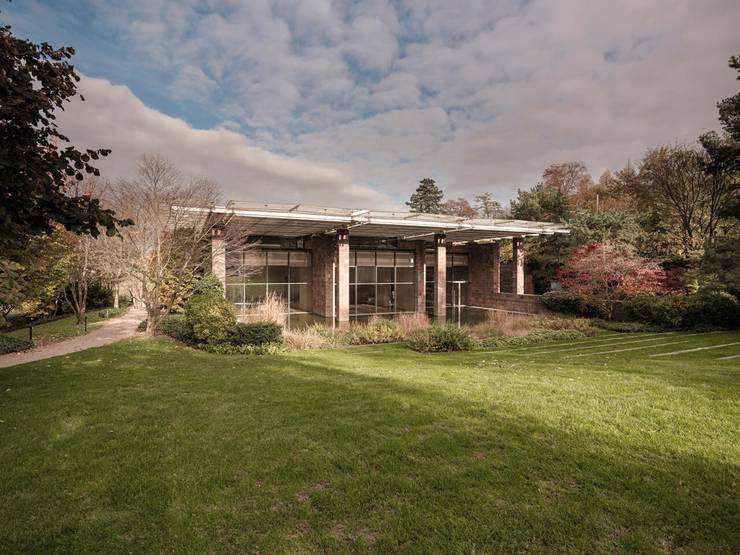
The home of Lausanne’s Musée de l’Élysée, on the other hand, is a historical gem: an 18th-century villa a few steps away from the lake. From the first daguerreotypes to modern-day images, the evolution of photography is charted in these halls. More than a million shots are kept by the museum (including the collections of Charlie Chaplin and Swiss photographer René Burri), all of which will soon be moved to the institution’s new site in the cultural district of Plateforme 10.

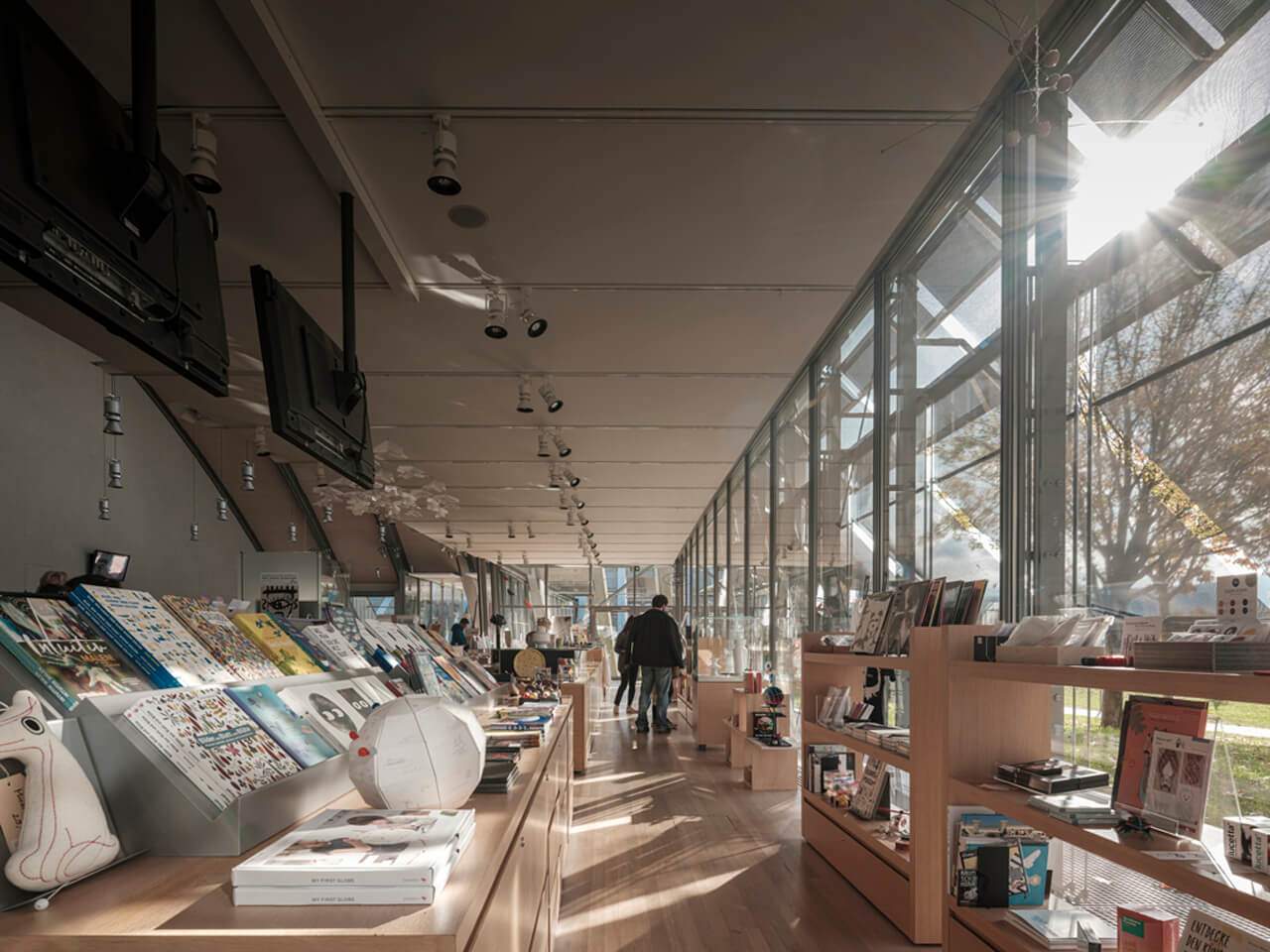
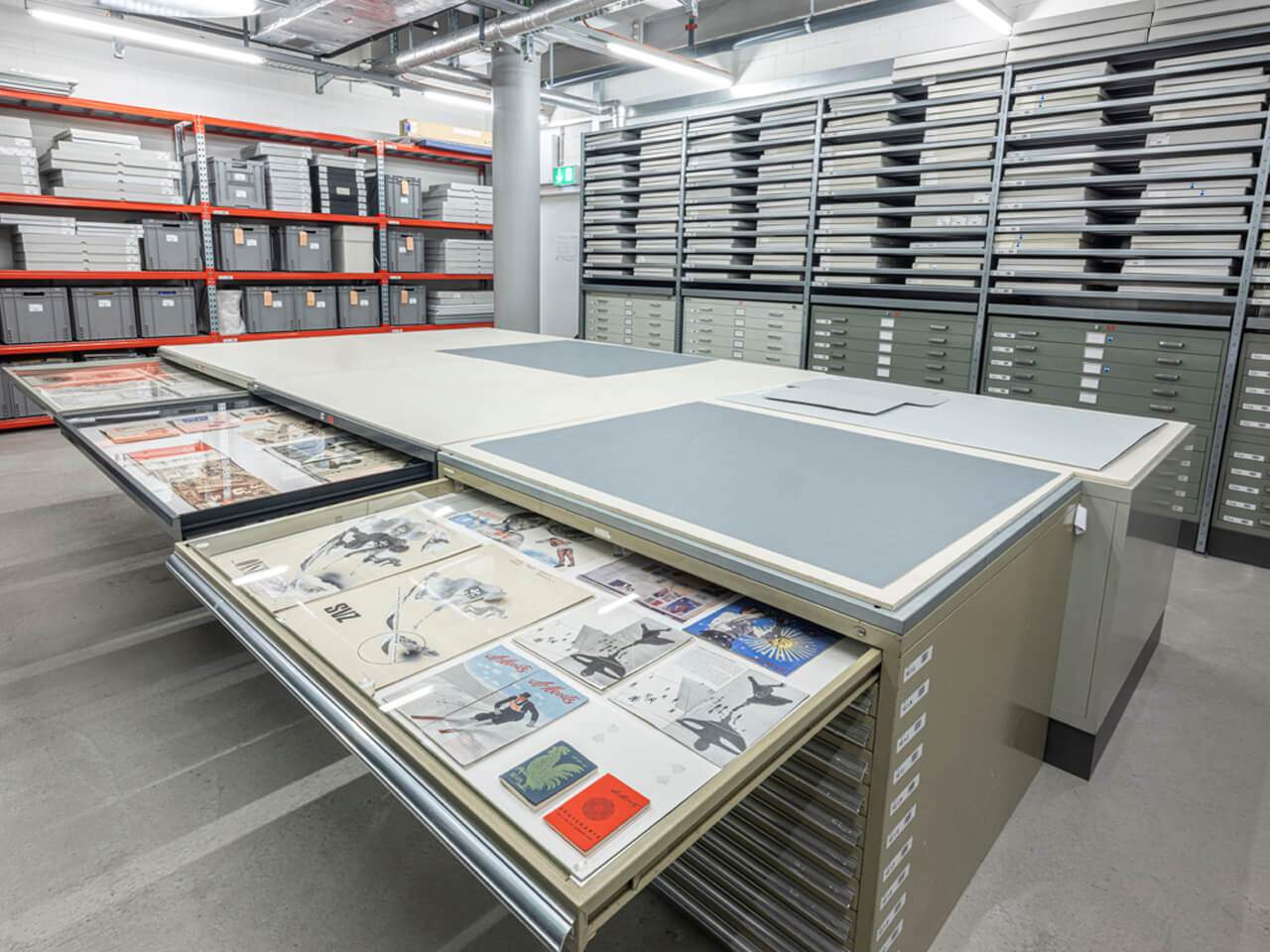
Like the canton in which it is located, Lugano’s Masi represents the perfect meeting point between German and Italian-speaking cultures. Spread between the modern-looking LAC centre and the stately Palazzo Reali, the institution often makes a point of spotlighting artists from Ticino in its programme.
Finally, to Zürich. Switzerland has rightly built a reputation as one of the most design-forward countries on the globe. From typography to architecture, many of the discipline’s greats were born or worked in the nation. And nowhere’s better to study their output than the Museum für Gestaltung: across its two locations, it’s amassed more than 500,000 objects, from posters to products. Its 1930s modernist building in central Zürich is just as fascinating a piece of design history as the classics displayed within.

